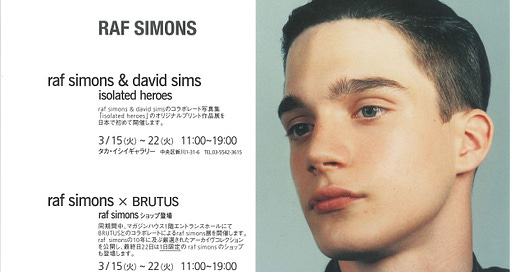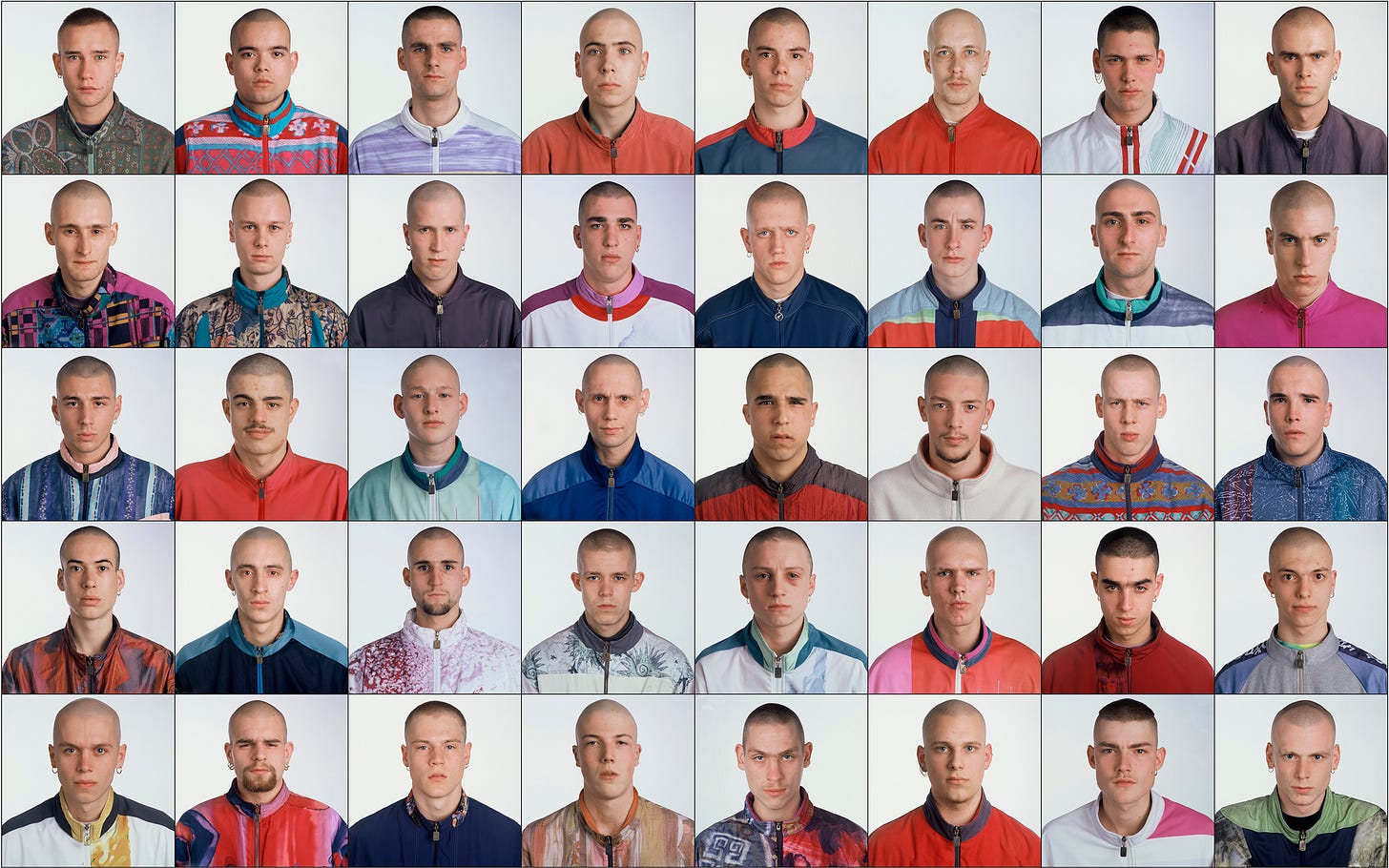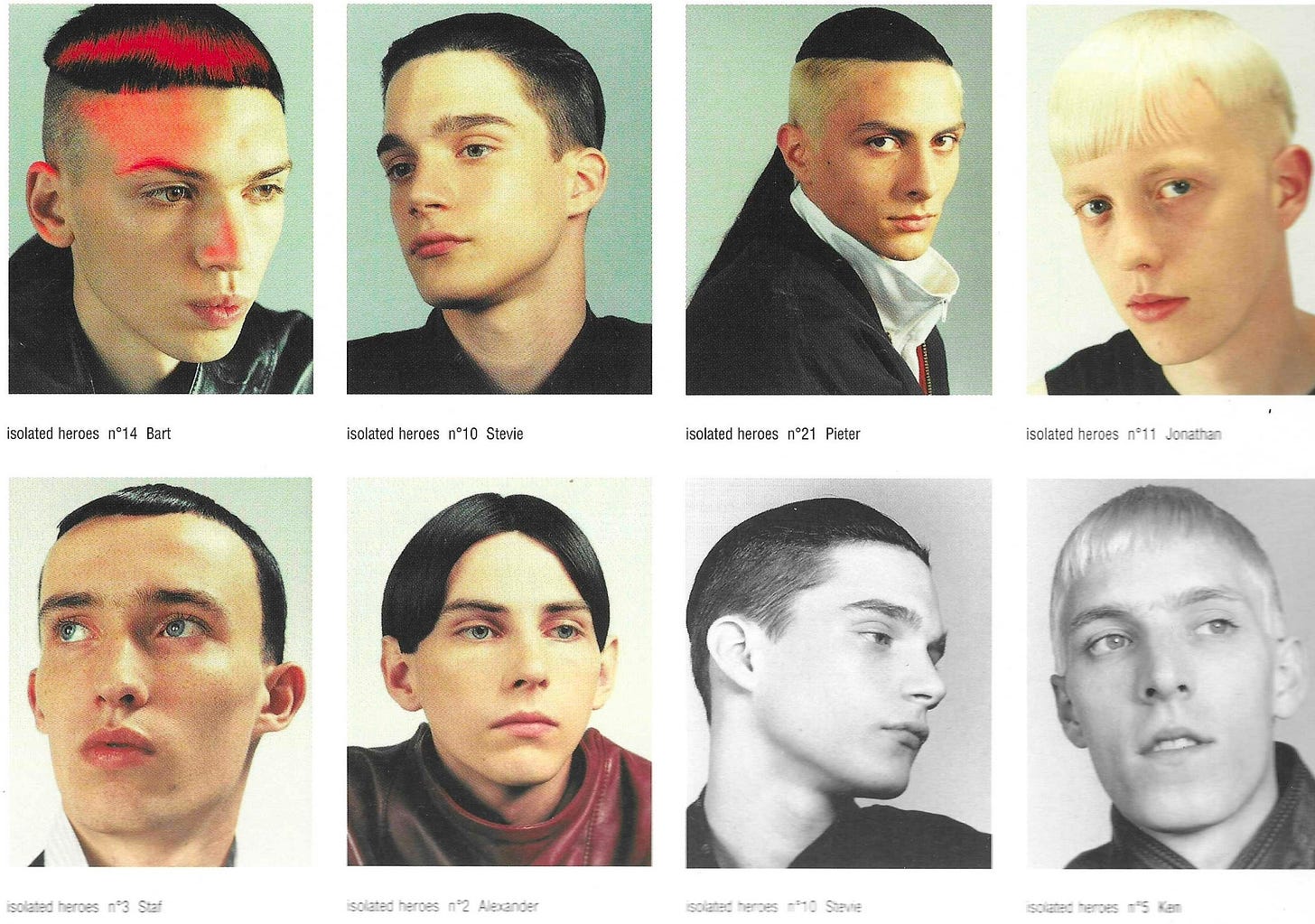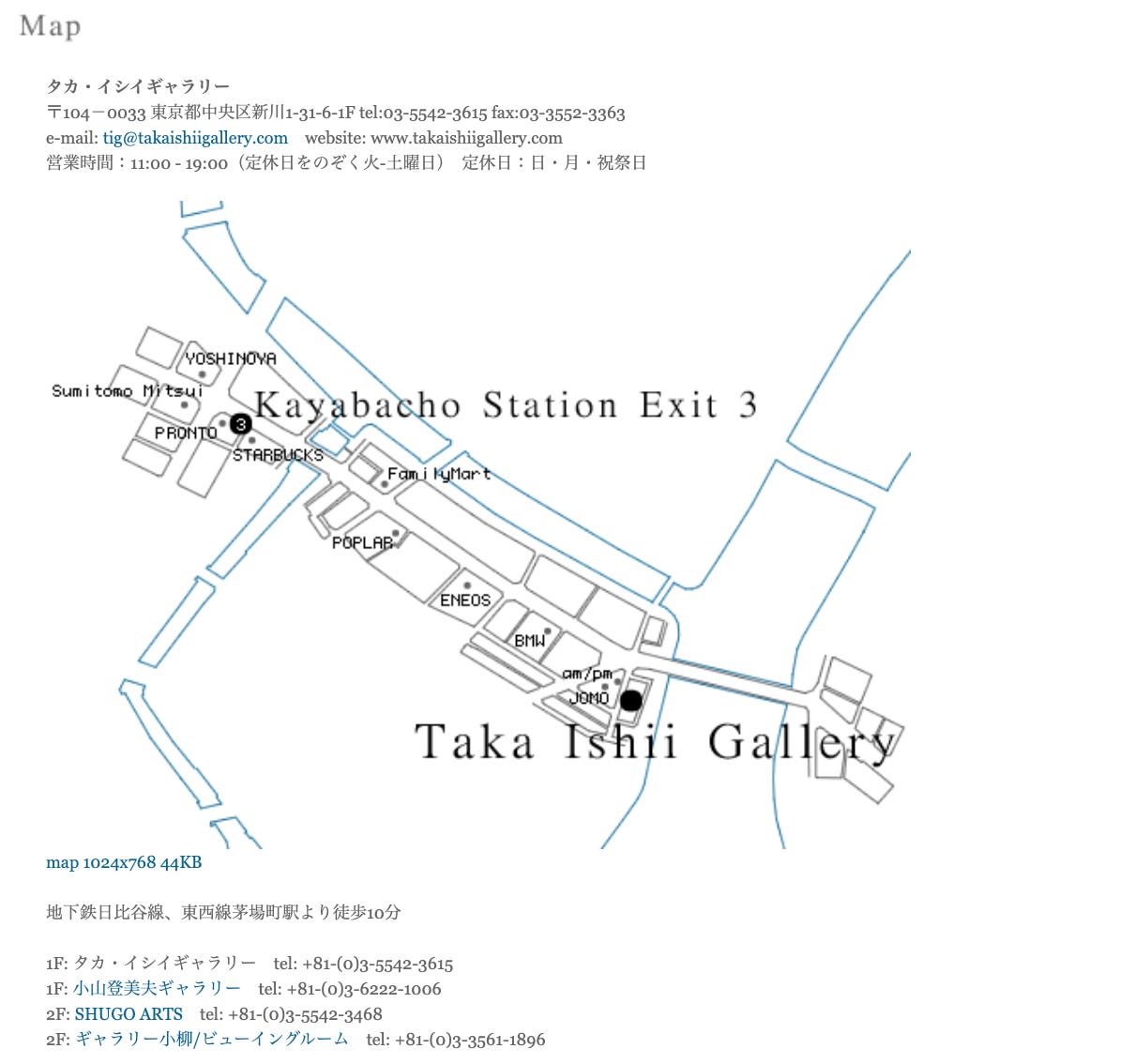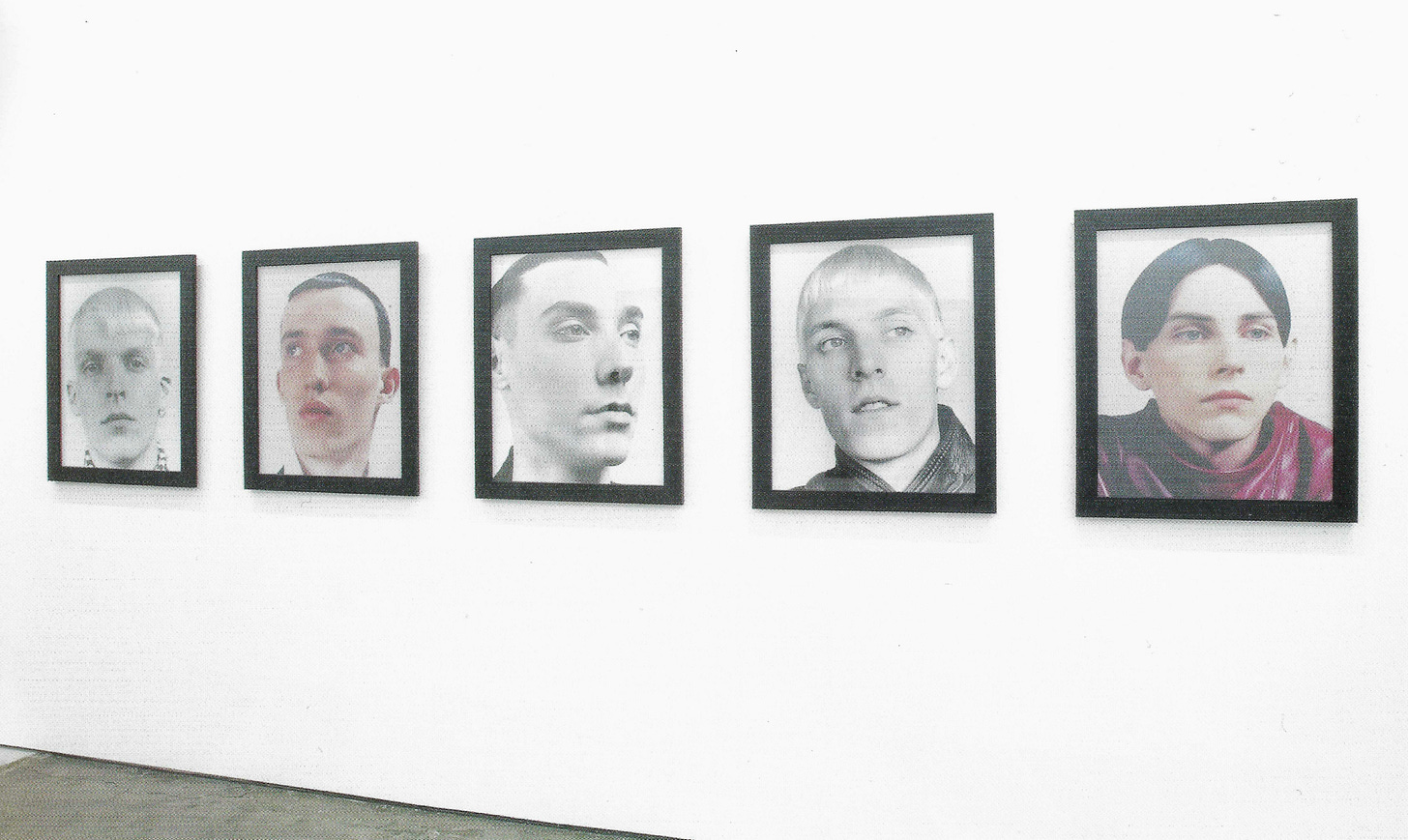Node to Neo-Tokyo: Raf Simons at Taka Ishii Gallery
Raf Simons and David Sims' 2005 photo exhibition in Tokyo
Raf Simons’ 2005 exhibition at Taka Ishii Gallery, Isolated Heroes, marked a quiet but pivotal convergence between Antwerp and Tokyo—a moment when both fashion cores coalesced in the nebulous global fashion datastream.
Raf Simons first conceived of the Isolated Heroes project in 1999 as a visual component to his Spring-Summer 2000 collection (a personal favorite of mine). The collection would be primarily influenced by Gabber, a music and cultural scene that grew out of Amsterdam in the mid-1990s, and a source of youth culture that Raf would fully channel via the clothes, casting, and styling. The overall aesthetic and direction was heavily inspired by Dutch photographers Ari Versluis and Ellie Uyttenbroek, whose photo series Exactitudes documented the booming Gabber and hardcore scene in Amsterdam, primarily centered around the Thunderdome series of parties in the Netherlands.
This raw, youth-driven vision would soon find visual agency in the work of fashion photographer David Sims. Sims, a British fashion photographer who would team up with Simons on the project, came to prominence in the early 1990s. Sims was described as part of ‘the new London school of “grunge” photographers’ by photo curator Martin Harrison.1 While sharing a long-time mutual interest in each other’s work, Simons and Sims did not meet each other until 1999, shortly before the project was undertaken in July of that year during Raf’s presentation of the collection at Paris Fashion Week.
Speaking to High Fashion in 2005, Simons recalled their meeting:
“He had already established his style in fashion photography, capturing street-cast people. We clicked immediately and decided to shoot during Paris Fashion Week using show models—not for fashion editorials, but to capture their characters.”2
Expanding on the vision behind the project, Peter de Potter, a longtime collaborator of Simons, described the overall direction and visuals of the series:
The Isolated Heroes project deals with beauty, youth, masculinity and the perfect isolation of all these preoccupations. Above all, the series [is] about individuality, the keyword that sets both Sims' photography and Simons' designs apart within their own specific fields. Sims and Simons share the same notions of aesthetics: honest, untouched, pure and real.3
Soon after the photos were taken at Fashion Week, the series would be memorialized in a publication of the same name, released in January 2000. In conjunction with the publication release, Sims and Simons would exhibit the corresponding photographs at several art galleries throughout Europe, with the first iteration at the Purple Fashion Institute in Paris, January 2000. It would soon travel to Emily Tsingou Gallery, London (October 2001), Torch Gallery, Amsterdam (November 2001), and Bergman Kaiserstraße, Berlin (November 2002). Three years would pass before the show would go across the globe to Tokyo in 2005.
Rewinding a few years prior: in 1994, Takayuki Ishii, a Japanese art dealer recently relocated back to Tokyo from Los Angeles, opened Taka Ishii Gallery in Otsuka Ward. Ishii was an early pioneer of exporting Japanese artists abroad, and focused specifically on photography as a medium, showcasing the likes of Nobuyoshi Araki and Yasumasa Morimura. According to Ishii himself, in the early 1990s any attempts to show Western and Japanese artists together, or in the same context, were rare.4 Ishii would specialize in bridging this previously unexplored (and somewhat taboo) gap, importing Western artists such as Jack Pierson and Christopher Wool to the Japanese audience throughout the 1990s. Taka Ishii Gallery would eventually move from their original Otsuka location to Chuo City in 2003.
Building on this momentum, Taka Ishii’s decision to pick up the final iteration of Isolated Heroes was a fascinating but logical one – a stalwart of exhibiting photography, and merging Eastern and Western perspectives, Raf Simons’ massive appeal to the Japanese audience found a logical manifestation here.
Unfortunately little to no documentation of the show exists – I reached out to Taka Ishii Gallery directly, but the only records of the exhibition they could provide was an invitation card (featured at the top). After further investigation, I was able to track down one image of the exhibition installed at the gallery, which appeared in High Fashion, June 2005:
Anecdotally, Toshiko Taguchi, former editor of both High Fashion and Mr High Fashion, recalls Simons himself traveling to Tokyo at the time to attend the exhibition in person:
One day, Tsuyoshi Nimura, who did the styling for this page, told me that Raf was visiting Japan for the "Isolated Heroes" exhibition in collaboration with photographer David Sims, and that I should offer him to appear in the issue. I honestly thought there was a 99.9% chance he would say no. In the past, when I did the 7-page feature on Raf’s atelier for “MR”, which was in Antwerp, the only photos we were allowed to use were back shots and a fully body profile photo which barely showed his physique. He had never shown his face in any way. But when I sent him the request letter, he immediately responded with a yes.5
Despite scant archival records, Raf Simons at Taka Ishii is one of the many flickering sparks emanating from the special bond between Antwerp and Tokyo. Whether it manifested as Sunflare (Raf’s Japanese distributor), Kokonoe (Margiela’s Japanese incorporation), or Taka Ishii’s embrace and import of Western aesthetics and artists like Raf Simons, I believe we can look back on this moment as an important node point in archival fashion history.
Fallon, James, ‘The Outside’s In’, Women’s Wear Daily, 12 December 1994
___, ‘RAF SIMONS. Isolated Heroes’, High Fashion, June 2005, p. 119
de Potter, Peter, ‘Isolated Heroes’, on: www.rafsimons.com, 2005 (via Wayback Machine)

